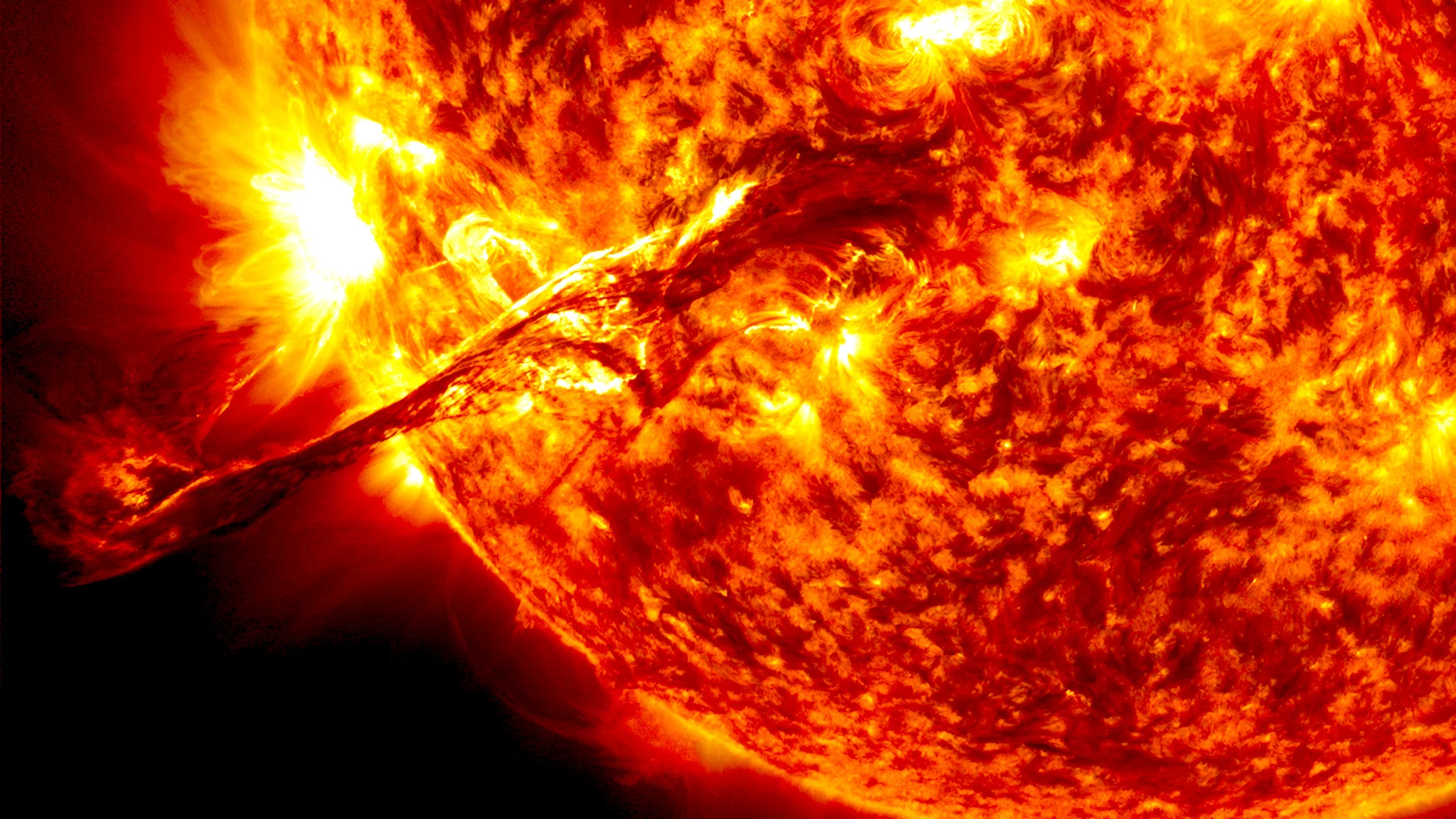
Largest solar storm ever revealed by ancient tree rings
14,300 years ago, a solar storm struck Earth that was so powerful, were to hit us today, it could result in worldwide blackouts that would last for years.
By examining tree rings from a buried French forest, researchers have unearthed evidence of a solar storm so powerful it would be like nothing we've ever seen so far from the Sun.
Space weather can dazzle us with beautiful displays of the Aurora Borealis, aka The Northern Lights. At the same time, extreme space weather poses a risk to our technologies. It can also be a danger for astronauts, as well as aircraft crews and passengers flying at high altitudes across the poles.
Over the past 165 years or so, there have been several space weather events that give us pause these days. The most famous is the 1859 Carrington Event, when an extreme solar flare and coronal mass ejection sparked aurora displays that were visible in the tropics and disrupted the telegraph networks operating at the time. Another in May 1921, known as the New York Railway Storm, is now considered to be the most intense geomagnetic storm of the 20th century. It caused a similar disruption to telegraph networks, but also numerous fires due to the excess electric current flowing along the wires.
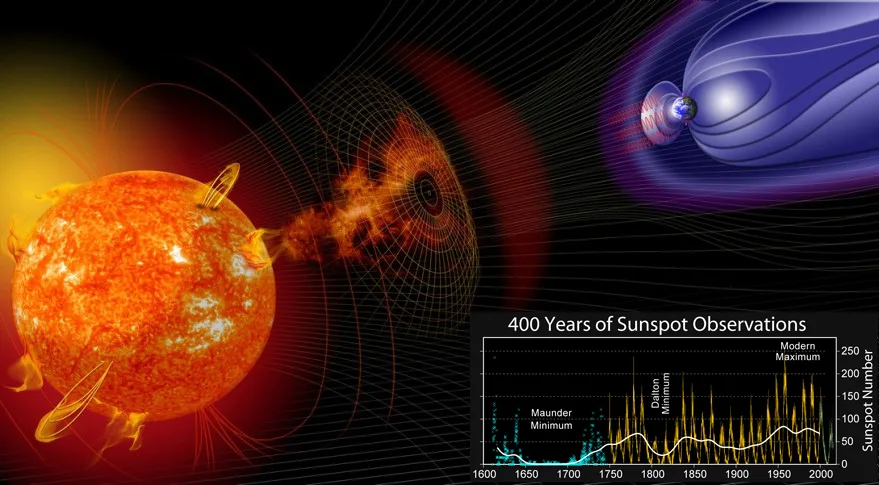
This artist's depiction of space weather shows several phenomena, such as coronal loops, solar flares, a coronal mass ejection, and Earth's geomagnetic field. Credit: NASA
Going back even further, though, researchers have found evidence of even more powerful examples of space weather.
Called 'Miyake events' after Japanese physicist Fusa Miyake who first described them, they were all discovered due to an immense spike in radioactive isotopes — either carbon-14 (also known as radiocarbon) found in tree rings, or beryllium-10 and chlorine-36 isotopes detected in glacial ice cores from Greenland or Antarctica.
Each of these isotopes is known to be produced when cosmic ray particles hit the top of the atmosphere from space. This also occurs during space weather events known as solar radiation storms, where charged solar particles are accelerated away from the Sun by the energy from a solar flare or coronal mass ejection.
Based on the magnitude of these isotope spikes, though, Miyake events are not the result of any solar radiation storm we've seen in the modern satellite era. They represent solar activity roughly ten times the intensity of the Carrington Event.
Up until now, scientists had found eight Miyake events. The earliest was in the year 7176 BCE, and the latest was a little over a thousand years ago, in 993 CE.
As of a new paper published by The Royal Society in early October, a research team from France and the United Kingdom has announced a ninth. According to the researchers, it is now the oldest ever found, taking place 14,300 years ago. It also appears to be the most powerful one ever discovered.
Buried trees reveal extreme space weather
Along the banks of the Drouzet River in the southern French Alps, scientists discovered an ancient copse of pine trees buried under layers of sediment that washed over the area when the glaciers melted at the end of the last ice age.
Digging these partially fossilized trees out of the river bank, the researchers carefully examined their individual tree rings for radiocarbon spikes, and they found one, dated at around 12,350 BCE, or about 14,300 years ago.
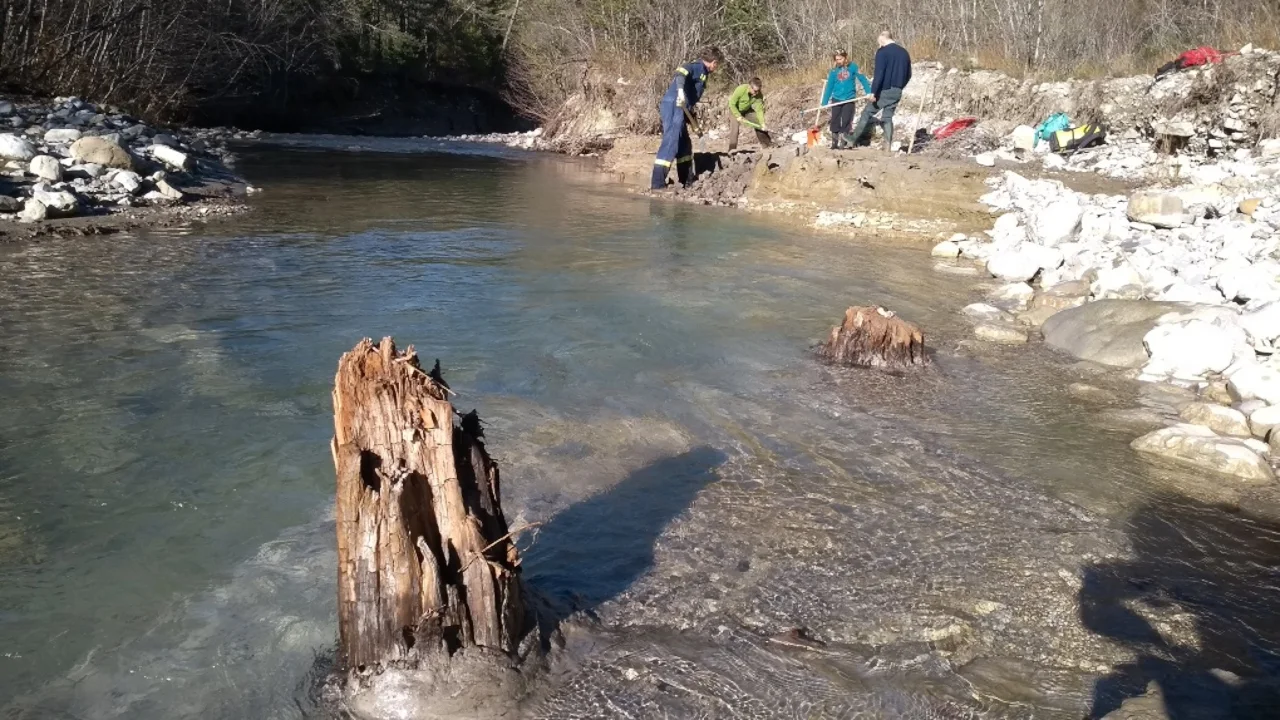
Buried subfossil Scots pine trees are dug out of the Drouzet River, in the search for ancient space weather events. Credit: Cécile Miramont
The word they used to describe the immense spike in carbon-14 in this particular tree ring was "unprecedented."
With this spike in carbon-14 levels being so unusually high, the research team — led by Edouard Bard from the Collège de France — verified its source using beryllium-10 isotopes found in Greenland ice cores.
"Direct instrumental measurements of solar activity only began in the 17th century with the counting of sunspots. Nowadays, we also obtain detailed records using ground-based observatories, space probes, and satellites. However, all these short-term instrumental records are insufficient for a complete understanding of the Sun. Radiocarbon measured in tree-rings, used alongside beryllium in polar ice cores, provide the best way to understand the Sun's behaviour further back into the past," Bard said in a University of Leeds press release.
Based on what they found, Bard and his colleagues believe the unprecedented spike in carbon-14 they saw in these buried pine trees is evidence of the most powerful solar radiation storm ever discovered. Since solar radiation storms are caused by solar flares and coronal mass ejections, it follows that the cause of that solar radiation storm would have also been the strongest space weather event found so far.
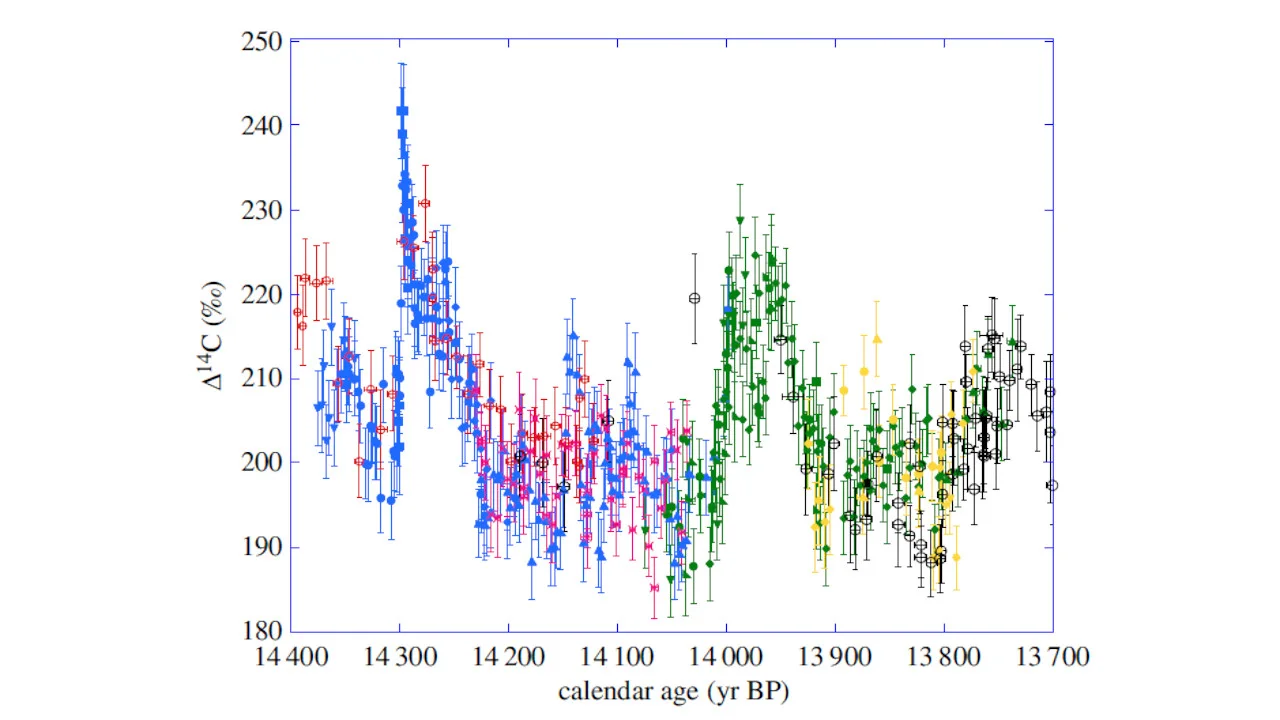
The tall blue spike in the left side of this graph is the 'unprecedented' spike in carbon-14 detected 14,300 years ago. A second maximum, in green, shows another event that lasted close to a century, from 13,900-14,000 years ago. Credit: Bard, et al.
In addition to discovering what could be the strongest solar storm found so far, the researchers also spotted another event in their tree-ring data.
This second maximum, while not as extreme as the 14,300 year old event, apparently lasting for roughly 100 years, from 14,000 years ago to 13,900 years ago.
The team believes that this may represent an extreme minimum in solar activity at the time. This would have been similar to the Maunder minimum that took place in the second half of the 17th century.
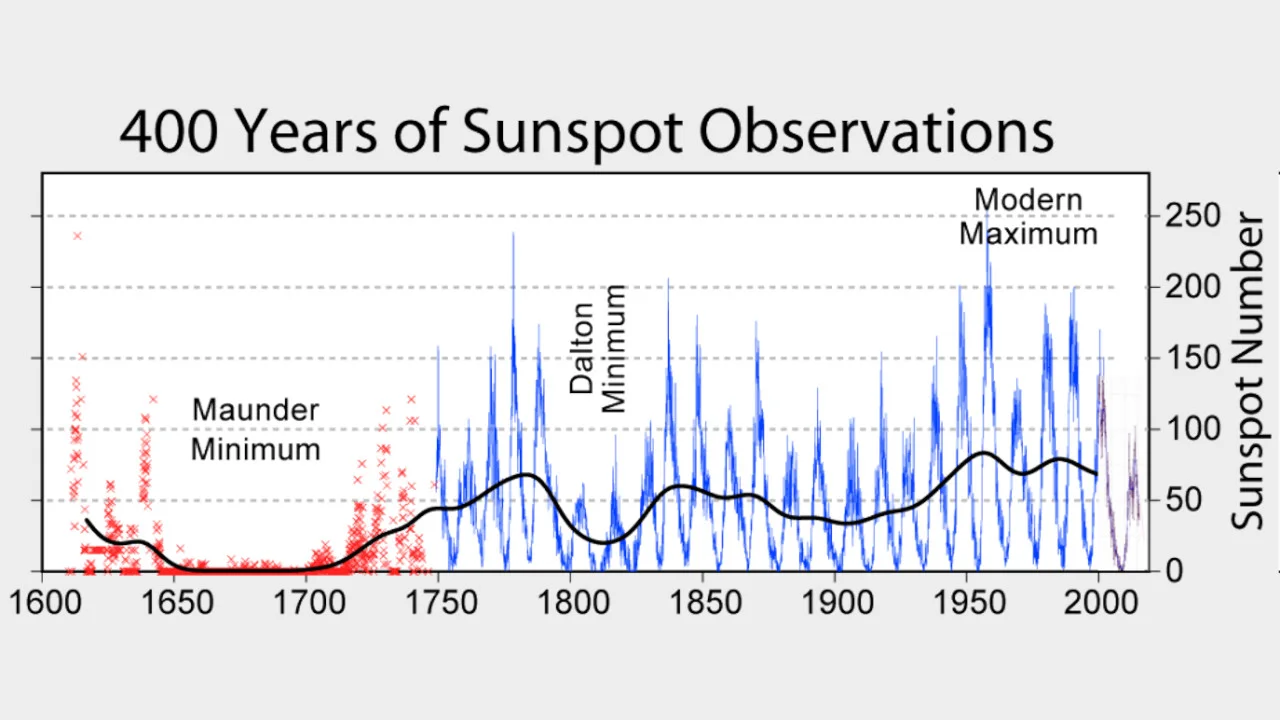
Credit: Wikimedia (CC-BY-3.0)
The increase in carbon-14 is thought to result from the less active solar magnetic field allowing more high-energy galactic cosmic rays into the solar system, which would cause the same reactions as solar cosmic rays when they strike Earth's atmosphere.
Knowing the past helps predict the future
Back in 1859 and 1921, there were solar storms strong enough to cause major disruptions in the limited technology, power grids, and telecommunications at the time.
If another Carrington Event or New York Railway Storm were to occur now, it would be a disaster.

This immense coronal mass ejection was spotted by the Solar Dynamics Observatory in August 2012. Credit: NASA
Studies have shown the incredible damage such an event would do to our power grids, satellites, and spacecraft in orbit. Estimates have put the resulting cost to the world economy in the tens of trillions of dollars, and optimistic outlooks say it would take months to years for us to recover.
If a Miyake event were to occur now, the solar flare or coronal mass ejection that caused it would have an even greater impact.
"A precise understanding of our past is essential if we want to accurately predict our future and mitigate potential risks," study co-author Tim Heaton, from the University of Leeds, said in the press release. "We still have much to learn. Each new discovery not only helps answer existing key questions but can also generate new ones."











